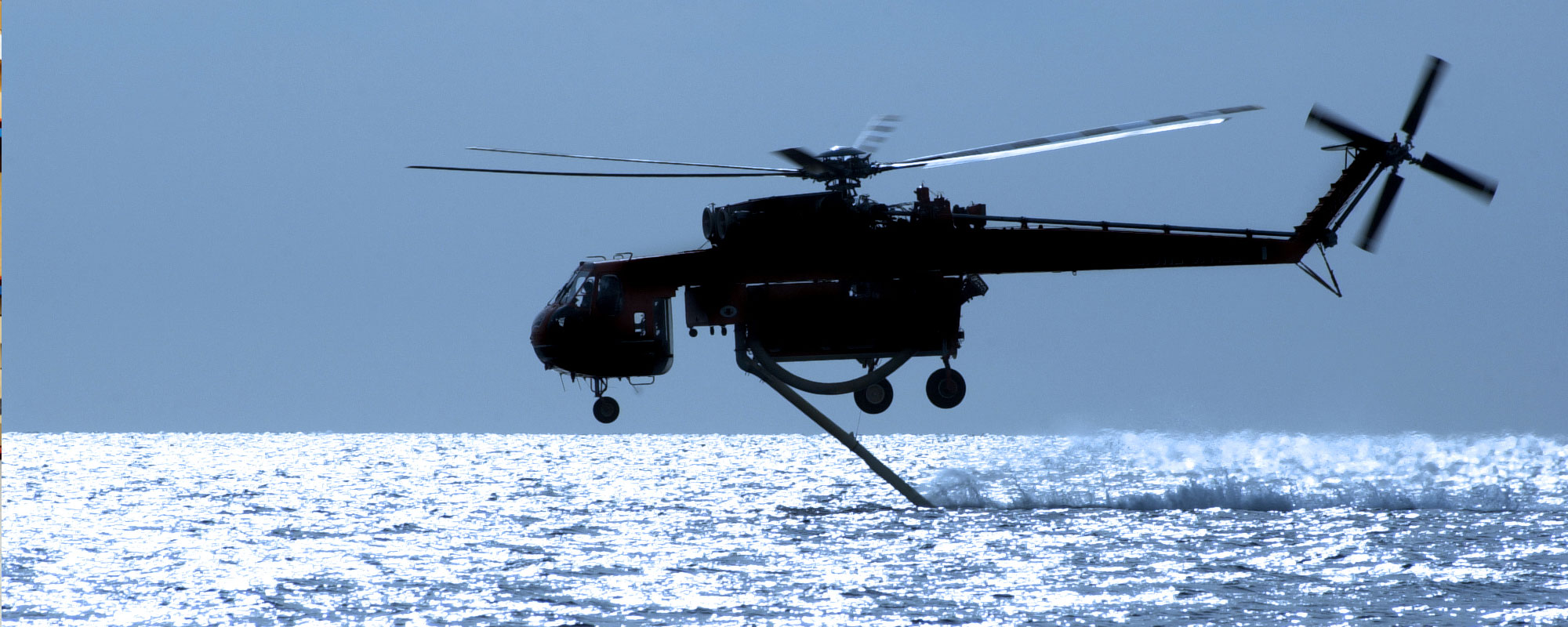Impact
Next-Gen Aerial Firefighting
Matt Carl, a Timken application engineering specialist, understands the important role of Timken technology in battling massive wildfires. Aerial firefighters rely on Timken solutions to help save lives, protect property and preserve the environment. It’s the kind of critical work that has real-world impact for communities worldwide — and adds another layer of job satisfaction for those who contribute to the endeavor.
Carl works with helicopter builders on platforms used in defense and civil aviation, including firefighting helicopters. Timken® bearings are used in critical applications such as main, intermediate and tail rotor gearboxes.
“These helicopters don’t fly without Timken,” Carl said. “Timken is the bearing source for many helicopters because there’s nobody else qualified in many of the positions. That says a lot about our expertise and how much our work matters.”
“Timken is the bearing source for many helicopters because there’s nobody else qualified in many of the positions. That says a lot about our expertise and how much our work matters.”
Matt Carl
Timken Application Engineering Specialist
On board the world’s largest, most sophisticated firefighting rotorcraft
Climate change has increased the frequency and intensity of wildfires, with 2021 seeing record-breaking fires in diverse regions like Siberia, Greece and the U.S.[1] Ground firefighters and traditional firefighting helicopters are no longer enough.
Crews are turning to larger, more sophisticated helicopters that can work at night to precisely drop larger quantities of fire retardant. Nighttime is when fires are at their weakest due to higher humidity and less wind.
Often firefighting rotorcraft are decommissioned defense choppers retrofitted for aerial firefighting. Some are the world’s largest, able to suck up 3,000 gallons of water from a source in 90 seconds. Computers and night vision help pilots accurately drop water or flame retardant.
Others have retrofitted tankers with a 1,000-gallon capacity and snorkel systems for filling up from any water source at any time as well as special electronic systems to collect intelligence, evaluate drop effectiveness and identify targets.
Timken also provides bearings for an all-in-one, multiple-mission helicopter built specifically for aerial firefighting. It can carry up to 11 wildland firefighters, their gear and 1,000 gallons of water. It’s also the most flexible chopper in the industry because of its in-flight reconfigurations to accommodate search and rescue, hoist rescues and medical transport.
Creating impact across applications
With a Timken career spanning 26 years — 20 of that working with helicopter customers — Carl said he still gets excited about his work because of the unique applications. He and his colleagues are empowered to use what they know to create new designs for new challenges. In the world of helicopters, that happens frequently.
Helicopters don’t use standard “catalog” bearings. That’s because bearings must endure extreme conditions as well as fit each helicopter manufacturer’s unique chopper design. Timken engineers work with each customer to overcome demanding operating conditions in the lightest package possible.
Engineers address heavy loads through light-weighting. This means bearings are designed to fit in a small package — but can technically handle loads like a much larger bearing would. Less weight on the helicopter means more weight the bearing can help support in terms of passengers or fire retardant.
To withstand high temperatures, Timken engineers specify specialty steels and develop heat treatment techniques for bearing manufacture. They also customize the internal design profiles of every helicopter bearing to tolerate tough misalignment conditions. It takes technical expertise and manufacturing capabilities customers know Timken can provide.
Even though his role sometimes requires him to approach engineering down to a micro level, Carl noted that it’s rewarding to see how even small design innovations contribute to a safer, more efficient world.
“I have many friends that work in mechanical engineering,” he said. “I’m sure what they do is cool too, but at Timken our work plays a role in everything from safe commercial flights to building renewable energy capacity. What we do really does make a difference.”
____________________________________________________________________________
Wind energy growth in China exceeds expectations. Andy Zhou’s service engineering team provides vital support for the industry.
Last Updated: 2023/08/22
Published: 2021/11/22
